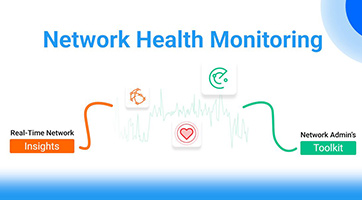Network health monitoring involves continuously tracking, analyzing, and managing your network’s performance and reliability. In today’s IT-dependent world, maintaining optimal network performance is crucial. Our monitoring tools provide real-time insights, enabling proactive management and quick resolution of potential issues.
What is Network Health Monitoring?
Network health monitoring uses specialized tools to oversee key performance metrics such as bandwidth usage, latency, packet loss, and uptime. By analyzing these metrics, businesses can preemptively address issues, ensuring smooth and efficient network operations.
Key Features
- Real-Time Monitoring: Continuously tracks network performance for up-to-date health status.
- Performance Metrics: Measures bandwidth, latency, jitter, and packet loss.
- Alerting and Notifications: Sends immediate alerts for performance threshold breaches or detected issues.
- Historical Data Analysis: Logs past performance to identify trends and recurring problems.
- Automated Remediation: Automatically resolves common network issues to minimize downtime.
- Comprehensive Reporting: Provides detailed performance reports for analysis and review.
- Scalability: Adapts to the needs of both small businesses and large enterprises.
Benefits
- Proactive Issue Detection: Identifies and resolves problems before they affect performance or cause downtime.
- Improved Network Performance: Ensures optimal functionality through continuous monitoring and management.
- Enhanced Security: Detects unusual activities that may signal security threats, allowing for timely action.
- Reduced Downtime: Minimizes outages and interruptions, maintaining continuous business operations.
- Cost Efficiency: Cuts costs associated with failures, emergency repairs, and productivity losses.
- Better Resource Management: Provides insights to optimize network resource allocation.
- Informed Decision Making: Delivers data-driven insights for strategic planning and investment.
